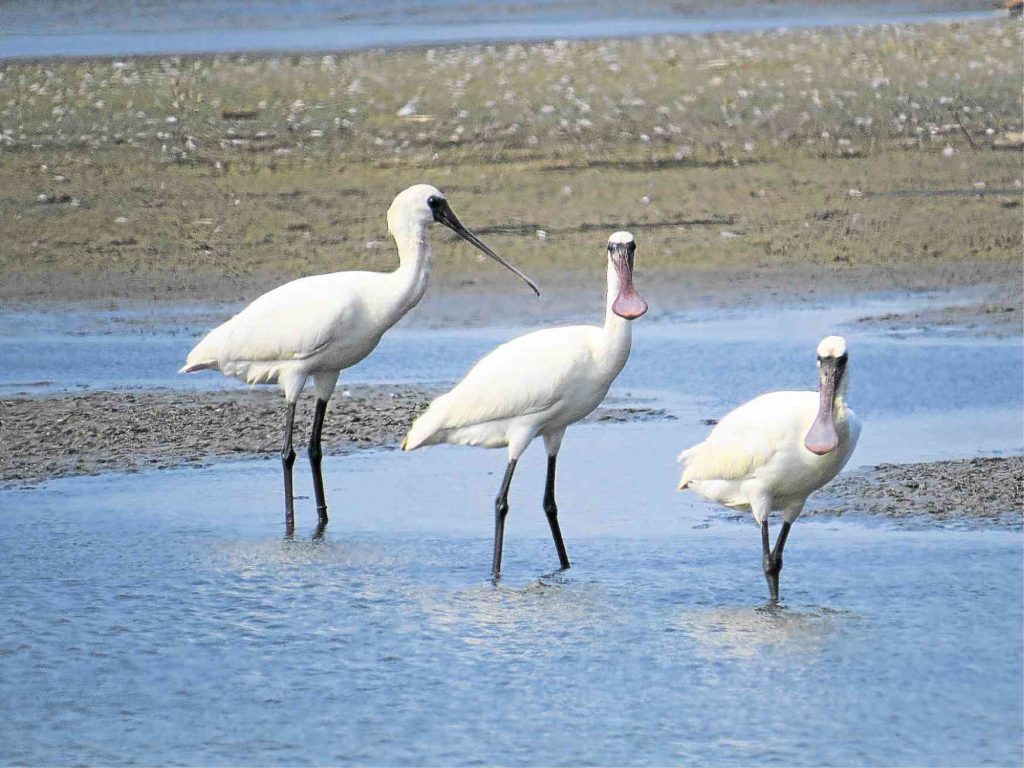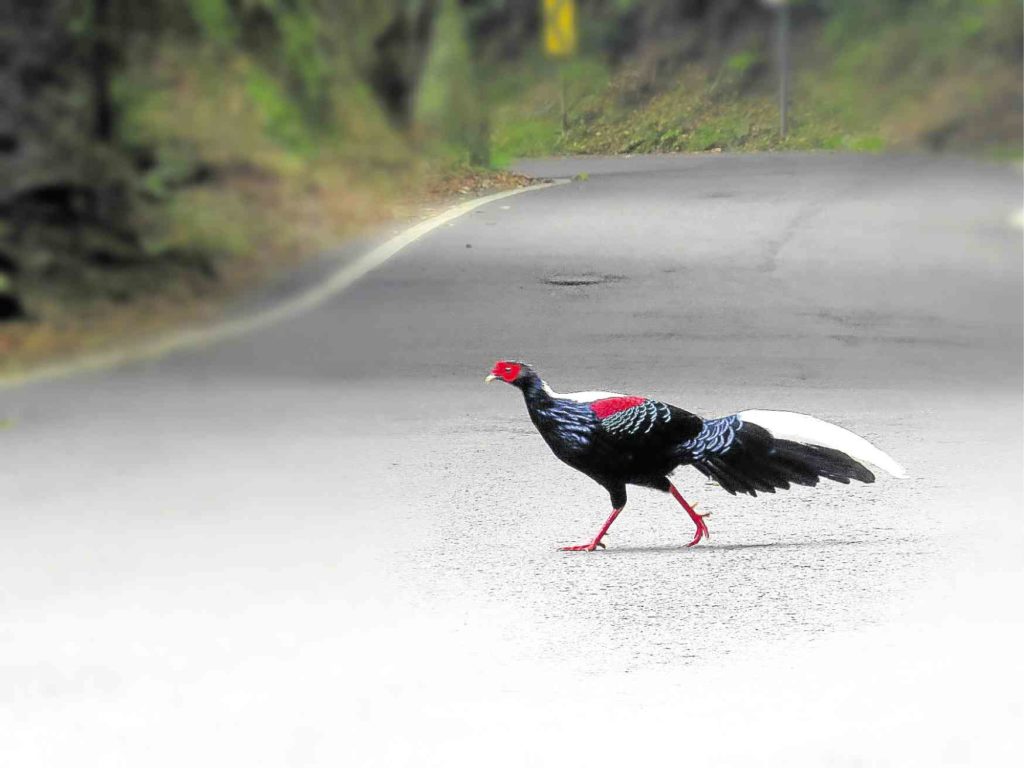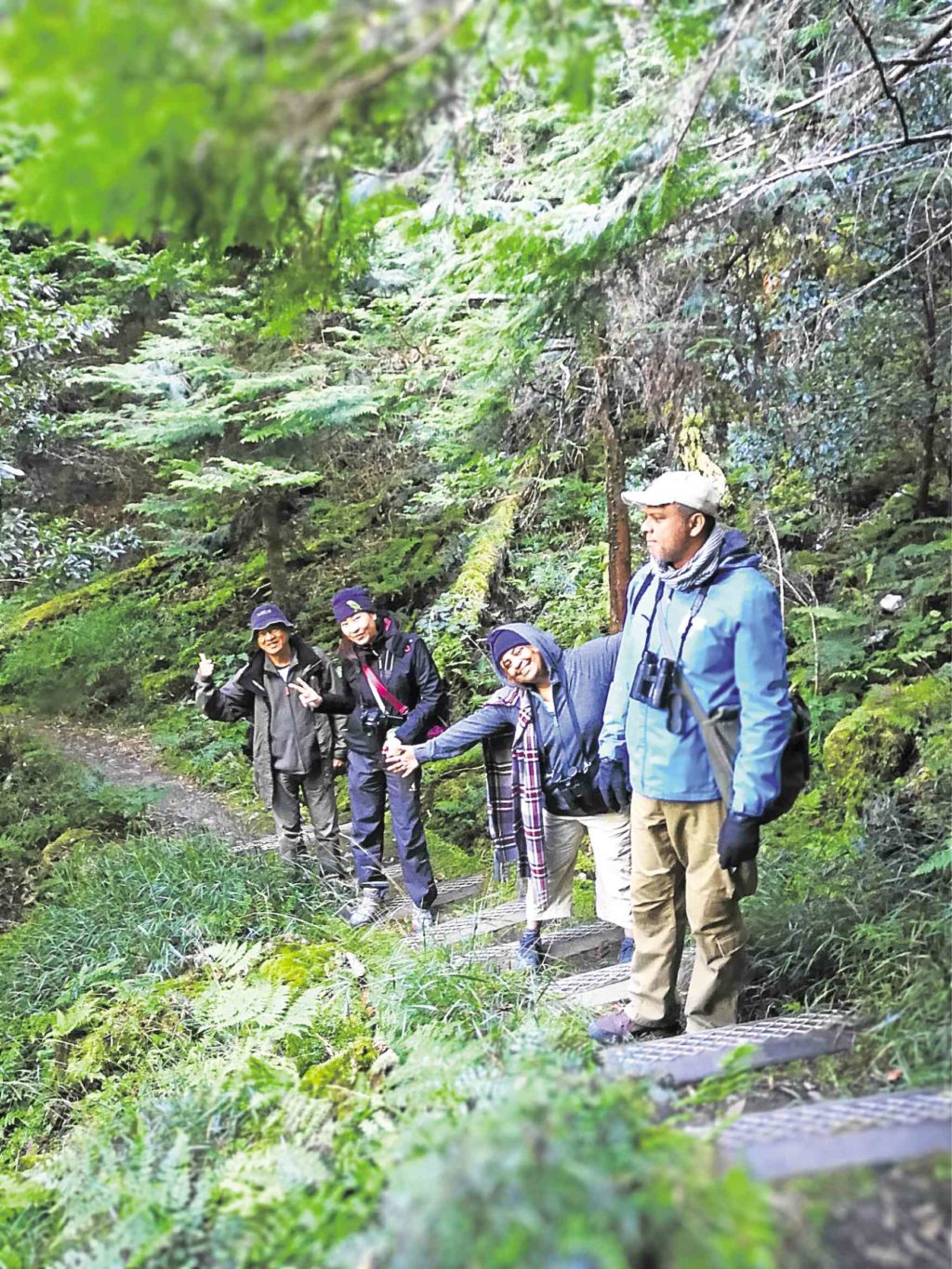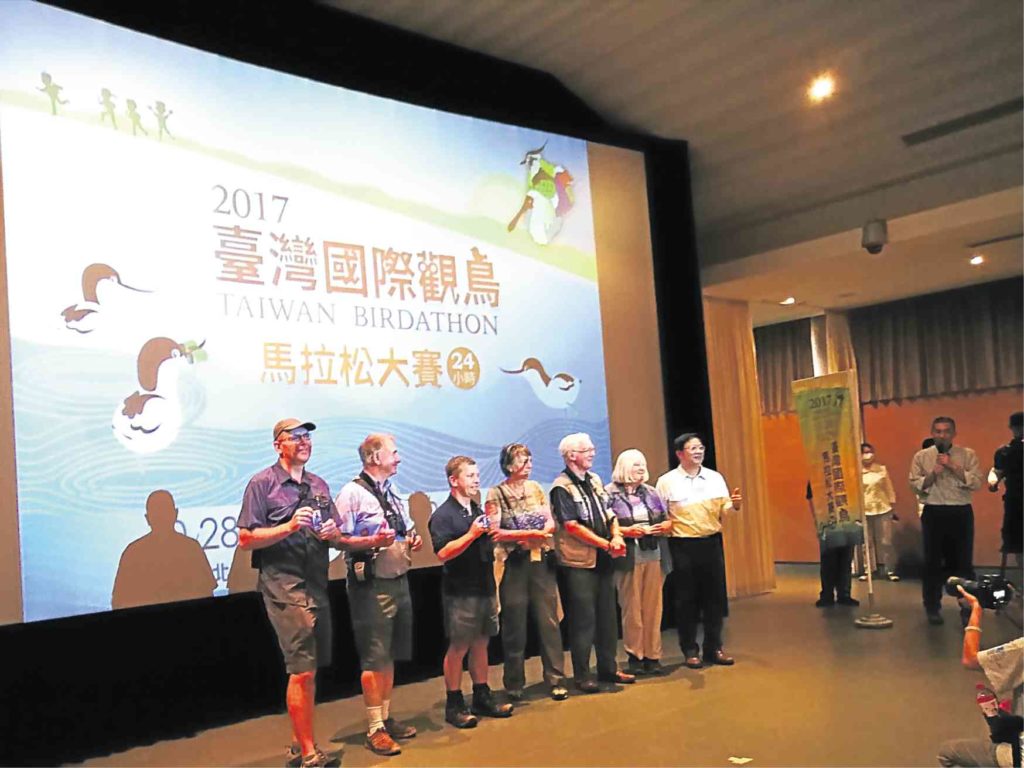Travel for the birds

Globally endangered Black-faced Spoonbill wintering at Taiwan’s Budai Wetlands. Photos by Lu-Ann Fuentes-Bajarias
Avian tourism or bird-based tourism has been steadily growing worldwide.
Increasing affordability of equipment from binoculars to cameras, and exposure to more festivals, documentaries and field guides have moved millions to travel in search of new birds—“lifers” in birding jargon —not found in their country or region.
Capitalizing on this expanding market, however, demands this consideration: Both nature travelers and operators tend to not only look at accessibility, security or infrastructure, but especially sustainability.
The World Economic Forum’s (WEF) 2017 report on travel and tourism competitiveness noted, “Data reveal that the environmental strength of a country is directly related to tourism revenue … the more pristine the natural environment of a country, the more tourists are inclined to travel there, and the more they are willing to pay to access well-preserved areas.”
Taiwan, in the same WEF report, ranked seventh in the Asia-Pacific region for index indicators such as: Ground and port infrastructure, cultural resources and business travel, safety and security.
The country is particularly keen to invite nature travelers and photographers from the Philippines to discover its avitours.
Ecotourism Taiwan president Victor Yu said, “Around 200,000 Filipinos visited Taiwan last year. But many Filipinos’ Taiwan experience may be more about Taipei 101, night markets, street food, hot springs, tea houses, or temples. With recent announcements on the 14-day visa-free entry to Taiwan for Filipinos, coupled with 13 long weekends in the Philippines in 2018, the adventurous can plan to rediscover the ‘The Heart of Asia’ through another lens.
Binocular lens, to be exact—to enjoy Taiwan anew as a birding destination.”
The Philippines’s closest regional neighbor, Taiwan is a mere two-hour plane ride away.

Taiwan endemic Swinhoe’s Pheasant, classified as Near Threatened, at Dasyueshan Forest Recreation Area.
Globally-endangered species
Bird-based tourism is eco-travel to protected areas, nature parks, trails and hotspots to observe endemic, migrating, and even endangered birds.
Wild Bird Club of the Philippines (WBCP) founding member Mike Lu cited an example of a so-called target bird: “Black-faced Spoonbill is a rare migrant in the Philippines. Reports of one to two individuals in the past decade have been few and far between in scattered sites such as Iwahig Penal Colony, Puerto Princesa; Candaba Marsh, Pampanga; Bicol River Estuary’s wetlands; Olango Island, Cebu; and Batan Island, Batanes. Local birdwatchers often fail in their attempts to catch sight of this globally-endangered species.”
Contrast this with how Taiwan has the largest wintering population of the Black-faced Spoonbill.
Yu shared that “of the 3,941 Black-faced Spoonbills recorded in the January 2017 international census, 2,601 individuals were from Taiwan. That’s 66 percent of the world’s population, giving birdwatchers the highest chances of a glimpse in the wild.”
This proved to be the case as avitourism operators and birdwatchers from Taiwan, Japan, Korea, Malaysia, China, Thailand, Vietnam and the Philippines—through a program backed by Taiwan Tourism Bureau’s Southwest Coast National Scenic area director Chen-Neng Hsu—reported Black-faced Spoonbills last Oct. 27 at Aogu Wetlands, and again on Oct. 28 at Budai Wetlands.
The group was delighted as well by a host of waterbirds such as Sacred Ibis, Great Cormorant, Pied Avocet, Green-winged Teal, Northern Shoveler, Eurasian Wigeon, Northern Pintail and Caspian Tern.
Incidentally, during a side event at the 12th Conference of the Parties (COP12) to the Convention on the Conservation of Migratory Species (CMS) of Wild Animals held in Manila last Oct. 24, the Philippines presented a resolution for intensified efforts to promote the sustainable use of intertidal wetlands and other coastal habitats of importance for migratory species worldwide.
Lu pointed out, “The Environment Secretary declared the country’s readiness to lead efforts to protect migratory wildlife species in the Asean region. Filipinos need to get behind this. For example, the declaration of the Las Piñas-Parañaque Critical Habitat (LPPCHEA) was based on sighting records of citizen birders from WBCP. But even as a wetland site of international importance under the Ramsar Convention, LPPCHEA is threatened by surrounding reclamation. Traveling to see protected wetlands across the region will expose Filipinos to how mudflats are not wastelands for filling up; they are an important network of feeding and breeding grounds for species protection.”

Through another lens: Rediscovering Taiwan as a birding destination.
International festivals
Avitourism is not only guided birdwatching trips, it also covers bird-themed festivals and races.
Last Oct. 27 to 28, the 5th Taiwan International Birdwatching Marathon, a 24-hour race to record the largest number of bird species-with special citation for country-endemic birds-in Yunlin, Chiayi and Tainan attracted birding teams from South Africa, Canada, the United States, the Netherlands, Ecuador, Spain and the United Kingdom. But even more impressive was how the birdathon was also a celebration of the local teams composed of university students, and families with their kids from six to 16.
During the birdathon’s closing ceremonies, Chiayi in Taiwan was revealed as the 2018 venue for the 9th Asian Bird Fair.
“People from all over fly in for the ABF, which highlights the different bird festivals in Asia to promote birdwatching and conservation in the region. The Wild Bird Club of the Philippines is actually a founding organization, and the first ABF was held in Davao City in 2010,” said Yu.
Also held last Oct. 21 and 22 at Guandu Nature Park was the 19th Taipei International Birdwatching Fair, Asia’s largest birdwatching event.
Cristina Cinco, WBCP executive committee member who was on ground for the Philippine booth observed, “The Fair was a collaboration between government and private individuals to raise awareness on the needed balance between people and nature, pointing to the value of birds as indicators of a good environment. Hundreds of booths highlighted avian species of different countries; sold bird-themed merchandise from optics gear to field guides; and set up educational materials for kids on birds and their habitats.”
She added, “Our own country is actually on its 12th Philippine Bird Fair by 2018, working with a different city’s local government, regional Department of Tourism, and volunteers every year—and traveling to experience how other countries set up and engage the public is instructive, both ways.”

The 5th Taiwan International Birdwatching Marathon, a 24-hour race to record bird species, attracted local family—and student—teams as well as representatives from seven countries.
Wildlife conservation
Avitourism is not only for the birds, it is also wildlife—or nature-oriented travel; it draws attention to local habitats, flora and fauna.
Popular Taiwan endemics—and unofficial national birds for the males’ patriotic red-white-blue colors-Swinhoe’s Pheasant and Mikado Pheasant are such cases.
These “King of the Mists” are protected species brought back from dangerously low numbers decades ago.
Restricted to the mountains of central Taiwan and given habitat loss outside boundaries, both are still classified as Near Threatened.
Protected areas like Dasyueshan and Alishan National Forest Recreation Areas plus reintroduction of captive-bred pheasants helped stabilize the wild population.
“Perhaps seeing these Taiwan pheasants with surprising ease will encourage Filipinos to also deliberately seek out our own Vulnerable-rated Philippine treasure, the Palawan Peacock-pheasant, and in the process start a conversation on the parts people play in wildlife and habitat risks and conservation,” Lu said.
While the pheasants are the stars, the mid-to-high altitude forest scenery revealed more country endemics including the Taiwan partridge, White-eared Sibia, Taiwan Yuhina, Taiwan Barwing, Steere’s Liochichla, Taiwan Hwamei, and Grey-cheeked Fulvetta. And as it often happens, while keen on birds, other wildlife came into awareness such as Barking Deer, White-faced Flying Squirrel, Formosan Rock Macaque, and Taiwan Serow.
But even if Filipino travelers do not have the time to go to Taiwan’s wetlands or mountains, they can still squeeze in an hour or two of birdwatching. The Taipei Botanical Gardens, a five-minute walk from the Xiaonanmen subway station, can be effortless “Taiwan Birding 101” for Japanese White-eye, Taiwan Barbet, Malayan Night Heron, Grey Treepie, Taiwan Scimitar-babbler, and more.
Sustainable development
“Avitourism promotes environmental appreciation, conservation awareness, and sustainable culture. Travelers will eventually be led to hold the travel industry, governments and partners accountable to the highest environmental standards. We can’t have a species or habitat protected in one country but not in the next country-cooperation on conservation enforcement is essential for our region to draw in, delight and educate visitors. This can only be a win-win-win proposition for destination country, source country and Mother Nature,” said Yu. –CONTRIBUTED
